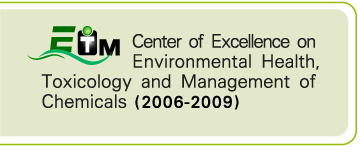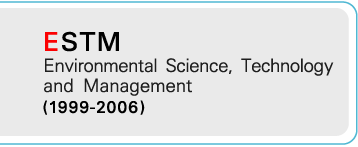|
The CdNO3.4H2O injection enables the stimulation of Cd-binding protein synthesis as metallothionein (MT) form in the Lates calcarifer, Bloch liver. MT protein undergone a protein extracted by immobilized metal ion affinity chromatography technique. After analyzed with SDS-PAG Electrophoresis and the UV spectra of Cd2+– protein complex, specific MT protein found to be in a pure form at molecular mass at 10 kDa. When MT protein antigen is used for immunization in mice, it was found that mice can synthesize Polyclonal antibody (PAb) specific to MT. And, when stimulated mice spleen cells are fused with cancer cells to obtain hybridoma cells, it was found that cells can synthesize monoclonal antibody specific to MT for some amount of time and later looses this specificity. For this reason, an improved technique to prepare MT antigen at a larger size has perform to immunize in mice. But improved technique has still failure in mice memory capacity. Therefore, PAb specific to MT is used to assess natural fish caught from the coast to indicate heavy metal contamination. Wild fish types have identify species and analysis of Cadmium (Cd) amount. These natural fish along the coast of Klongbangprong, Chonburi Province and Maptaput, Rayong Province was captured for samples, which should be within 3 kms away from the coast and more than 3 kms from the coast. Fish samples were collected two times of year (in 2008 and 2011). In 2008, diversity of fish was found to be at a higher level than in 2011 from both stations. However, fish amount type farther away from the coast of Rayong was low. The analysis of Cd amount from marine fish liver totaled 0.64 ± 0.38 µg/G Liver in 2008 from near and farther away from Rayong coast, which is three times higher than samples from Chonburi near and farther from the coast at 0.22 ± 0.14 µg/G Liver. The median range value of Cd amount is the same. As for year 2011, the Cd amount from both stations has similar value between 0.30 µg/G Liver. The Cd amount between years in each location near the coast and farther away from the coast are valued differently that is statistically significant (p < 0.01). The results indicated that natural fish has been exposed to heavy metals from both Provinces by measuring MT response with PAb specific to MT. Result from Chonburi, MT levels in fish at 57% in 2008, a higher amount than in 2011 at 33%. As for Rayong, 38% was found in 2008, a higher amount than in 2011 at 17%. Chonburi area is farther away from the coast, MT level was found to be higher than near the coast in 2008 and in 2011, there were no difference. As for Rayong coast, the results were similar, MT leve were found in fish samples near the coast at a higher level in 2008 and in 2011 it was found near the coast, but not farther away from the coast แหล่งข้อมูล:
|
 Center of Excellence on Environmental Health and Toxicology (EHT)
Center of Excellence on Environmental Health and Toxicology (EHT)










